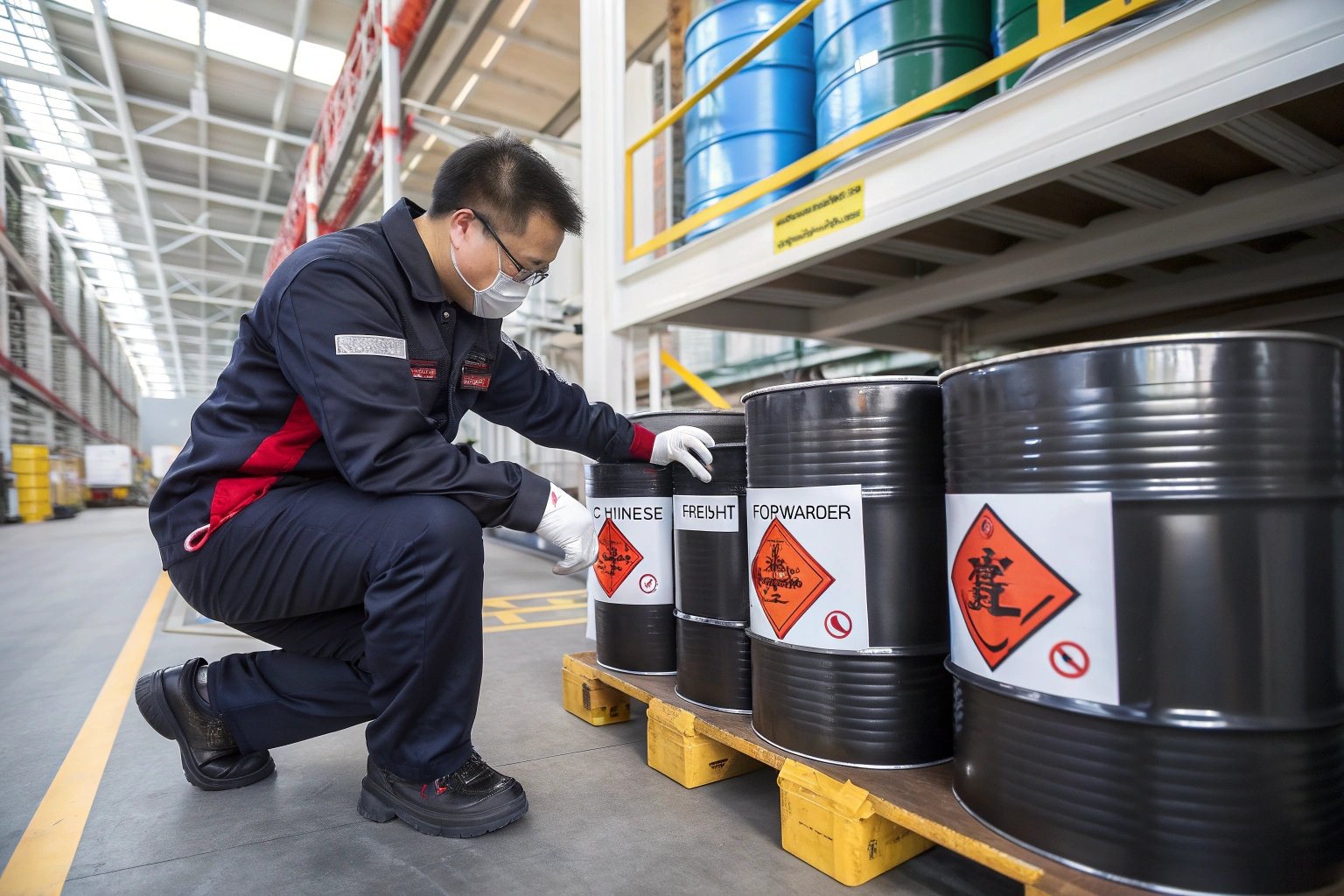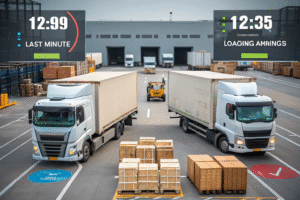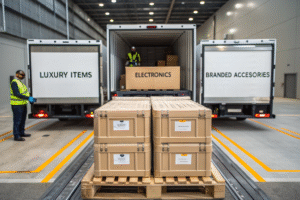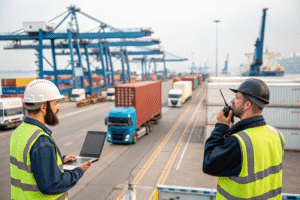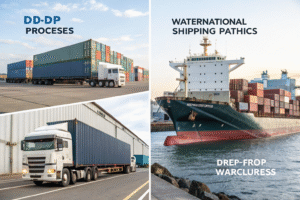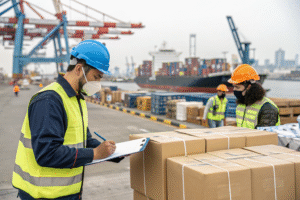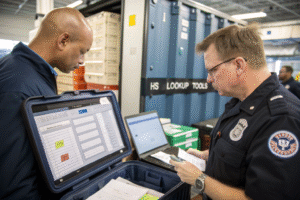Shipping hazardous materials isn’t just risky—it’s highly regulated. Mistakes can result in legal trouble, customs penalties, and cargo rejections.
Yes, professional freight forwarders can handle hazardous materials if they hold the required certifications, follow strict safety protocols, and comply with international and national regulations. GeeseCargo has the experience and licenses to manage these sensitive shipments responsibly.
Hazardous cargo isn’t something you want to experiment with. You need a forwarder who knows the rules, the risks, and the paperwork—because this is about safety, not just shipping.
What qualifies as hazardous materials in shipping
Not all dangerous goods look dangerous. Many everyday items are considered hazardous during transport.
Hazardous materials (HAZMAT) include flammable, corrosive, toxic, radioactive, or reactive substances. These range from lithium batteries and perfumes to paints and cleaning chemicals.
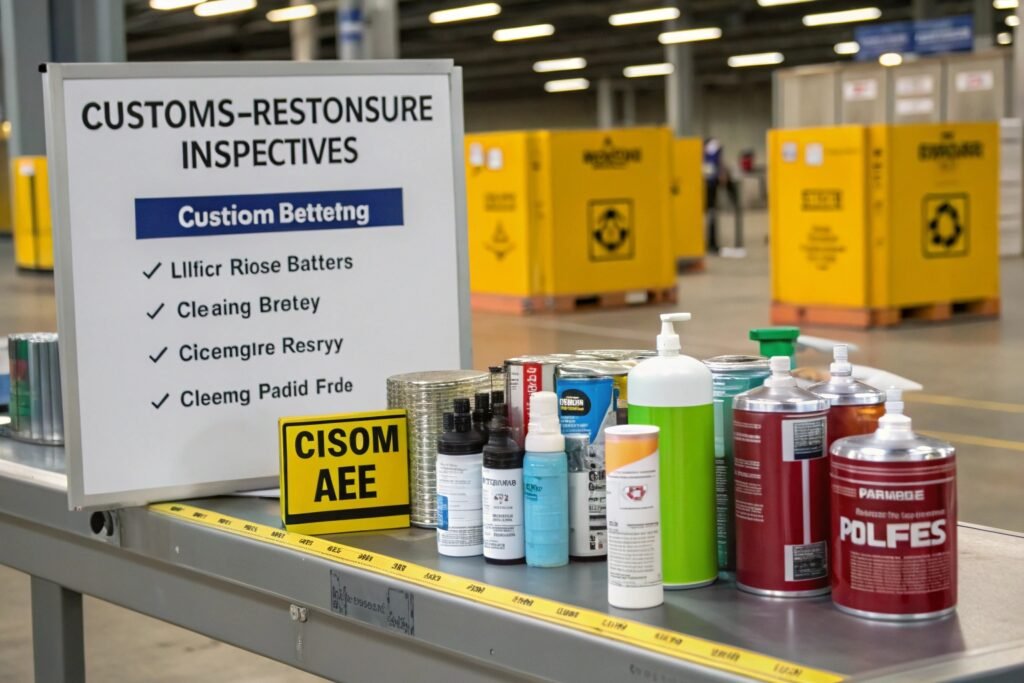
What are the main categories of hazardous goods?
HAZMAT is classified into nine classes by international transport authorities:
| Class | Description | Examples |
|---|---|---|
| 1 | Explosives | Fireworks, ammunition |
| 2 | Gases | Propane, aerosol cans |
| 3 | Flammable liquids | Alcohol, paint, gasoline |
| 4 | Flammable solids | Matches, magnesium |
| 5 | Oxidizing substances | Bleach, hydrogen peroxide |
| 6 | Toxic/infectious substances | Pesticides, medical samples |
| 7 | Radioactive material | Certain medical or industrial equipment |
| 8 | Corrosives | Battery acid, cleaning agents |
| 9 | Miscellaneous dangerous goods | Lithium batteries, dry ice, airbags |
Even if your item seems harmless—like a portable power bank—it might be classified under Class 9 and need special handling.
How can importers know if their cargo is regulated?
Check the product’s MSDS (Material Safety Data Sheet). If it contains flashpoints, reactive warnings, or mentions of DOT/UN codes, it likely qualifies.
At GeeseCargo, we review the MSDS for every questionable shipment. If needed, we involve certified DG specialists to confirm if it requires hazmat treatment.
Certifications required for handling dangerous goods
You can’t legally handle or move dangerous goods without proper training, documentation, and government approval.
Freight forwarders must hold certifications such as IATA (air), IMDG (sea), and local DG licenses to manage hazardous materials safely and legally.
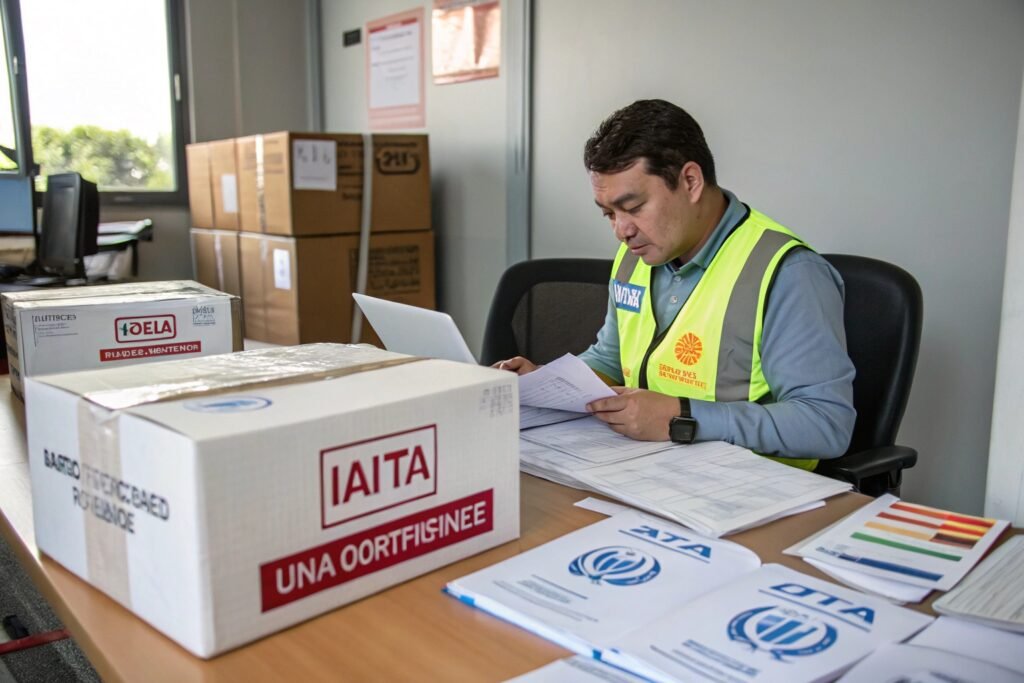
What licenses and training do forwarders need?
The main certifications are:
| Certificate/Training | Required For | Issued By |
|---|---|---|
| IATA DGR Certification | Air transport of hazmat | International Air Transport Association |
| IMDG Code Training | Ocean freight of dangerous cargo | International Maritime Organization |
| DG Handler License | Local approval to handle/store hazmat | National Transport Authorities |
| MSDS Review Training | Classify goods for risk | Internal/External Compliance Courses |
In our team at GeeseCargo, designated staff receive yearly IATA and IMDG training. This includes how to:
- Classify and label DG cargo
- Complete Shipper’s Declaration
- Handle emergency procedures
- Coordinate with hazmat truckers and storage sites
What happens if forwarders move hazmat without certification?
Penalties can include:
- Cargo confiscation
- Customs fines (up to thousands of dollars)
- Bans on future shipping
- Legal liability in case of accidents
We’ve had clients come to us after being fined for misdeclaring nail polish as general goods. With our guidance, they now ship it properly—with zero delays or penalties.
How forwarders ensure compliance with safety regulations
Hazmat isn’t just about paperwork—it’s about lives, cargo, and public safety. That’s why compliance is non-negotiable.
Freight forwarders ensure regulatory compliance by classifying goods accurately, using certified carriers, and filing all dangerous goods declarations with airlines, port authorities, and customs.
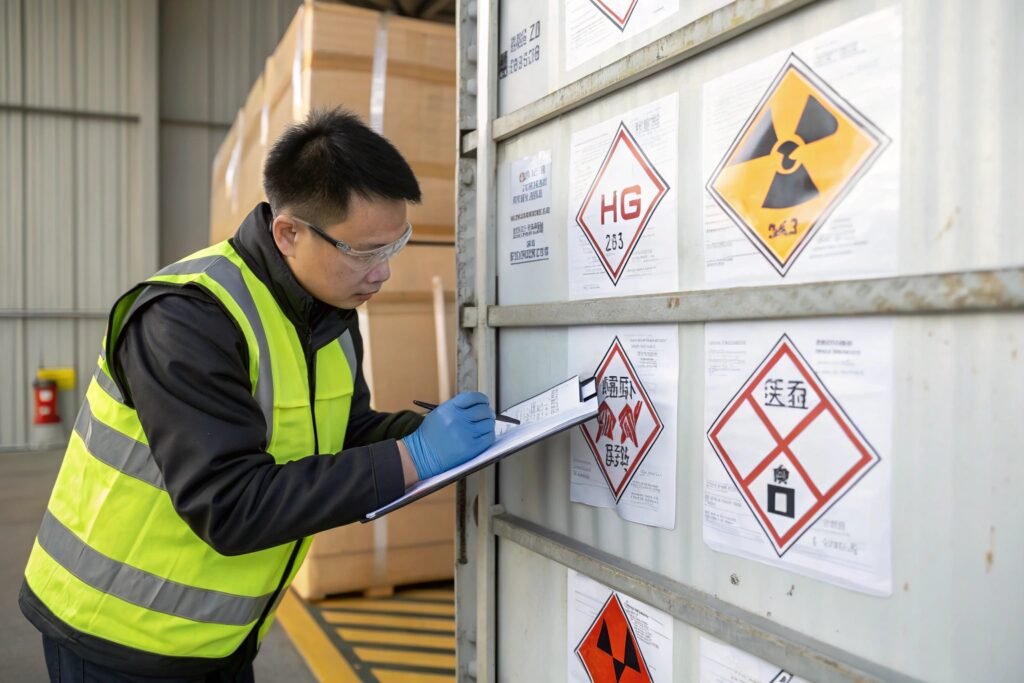
How do we classify and declare hazmat cargo properly?
Step-by-step, here’s how we handle it at GeeseCargo:
- Review MSDS: Understand chemical makeup and hazard class.
- Confirm UN number: Use UN regulations to identify correct classification.
- Check packaging instructions: Use Pxxx guidelines from IATA/IMDG codes.
- Label cargo correctly: Apply required hazard labels and markings.
- File DG Declaration: Submit with airway bill (for air) or shipping instructions (for sea).
- Pre-alert carriers and customs: Notify all involved parties.
Every step is documented. One missing detail could lead to rejection or detention at the port.
Who enforces safety laws—and how do forwarders pass inspection?
| Agency | Area of Oversight | Enforcement Method |
|---|---|---|
| IATA/ICAO | Air cargo safety rules | Airline cargo checks |
| IMO | Sea freight hazmat standards | Vessel DG manifest audits |
| China Maritime Safety | Chinese port DG cargo inspections | Physical cargo checks at loading |
| U.S. DOT/CBP | Import compliance in the U.S. | Paper audits, port scans, penalties |
Forwarders must maintain proper records and inspection readiness. We at GeeseCargo keep all DG documentation for at least 2 years, as required by law.
Packaging and labeling standards for hazardous cargo
Dangerous cargo must be packaged in a way that prevents leaks, sparks, spills, or reactions—even during turbulence or stacking.
Hazardous materials must be packed and labeled following UN-certified standards to minimize risk during handling, transit, and customs checks.

What are the packaging requirements for dangerous goods?
Hazmat packaging must:
- Be UN-certified (e.g. UN4G, UN3H)
- Match the exact packing instruction (e.g. P001)
- Include inner, outer, and sometimes intermediate containers
- Pass drop, stack, and pressure tests
At GeeseCargo, we work with suppliers and repackers to ensure these conditions are met. For example, when a client shipped hair sprays (Class 2.1), we switched from retail cartons to fiberboard with absorbent material and sealed caps.
| Package Type | Used For | Must Include |
|---|---|---|
| UN 4G Fiberboard Box | Flammable liquids or aerosols | UN stamp, inner liners |
| UN 1A1 Steel Drum | Corrosive or toxic liquids | Sealed closures, corrosion proof |
| UN 6HA Composite | Mixed substances or sensitive goods | Absorbent materials |
| Overpack (e.g. pallets) | Outer consolidation for handling | "Overpack" and repeat markings |
What hazard labels and markings are mandatory?
Cargo must be labeled with:
- Hazard class label (e.g. flame, skull, gas cylinder)
- UN number (e.g. UN1263 for paint)
- Proper shipping name
- Orientation arrows (if liquid)
- “This Way Up” and “Overpack” where applicable
Here’s an example:
Each box, drum, or crate must carry this info visibly. Otherwise, your cargo can be rejected—even if everything inside is correct.
Conclusion
Freight forwarders can absolutely handle hazardous materials—but only if they’re certified, experienced, and committed to safety. At GeeseCargo, we take hazmat compliance seriously so your cargo moves securely, legally, and without delays.
